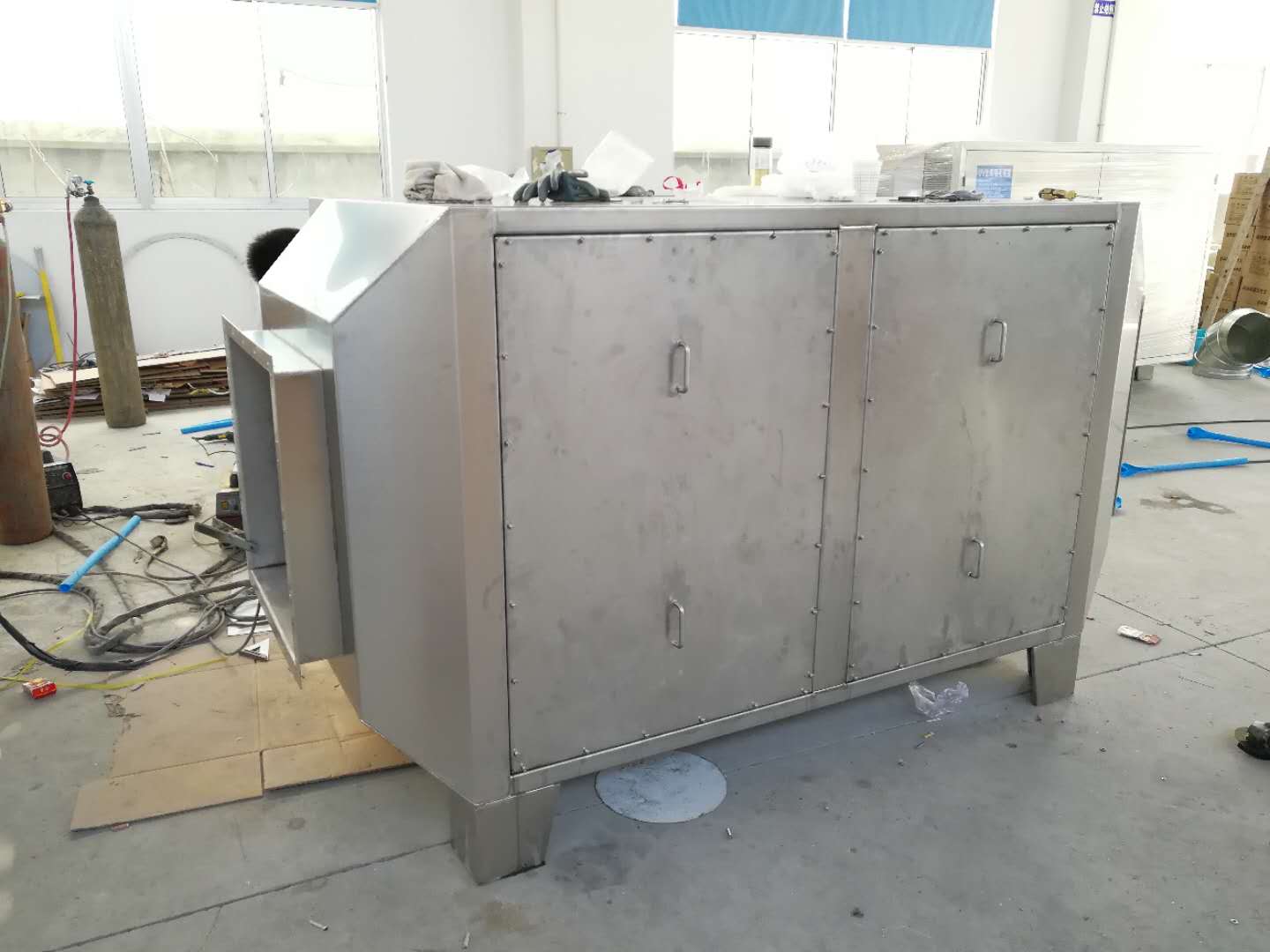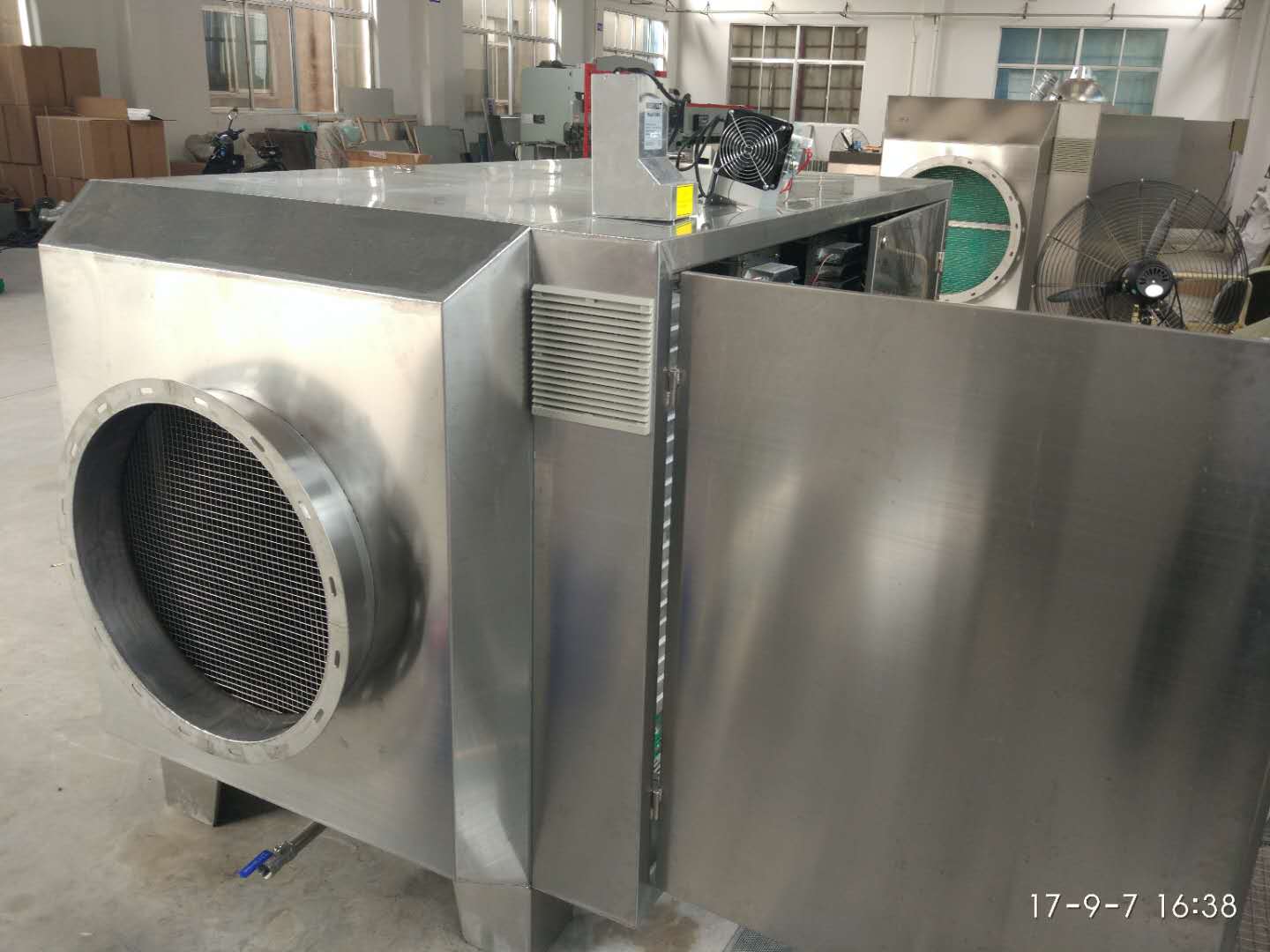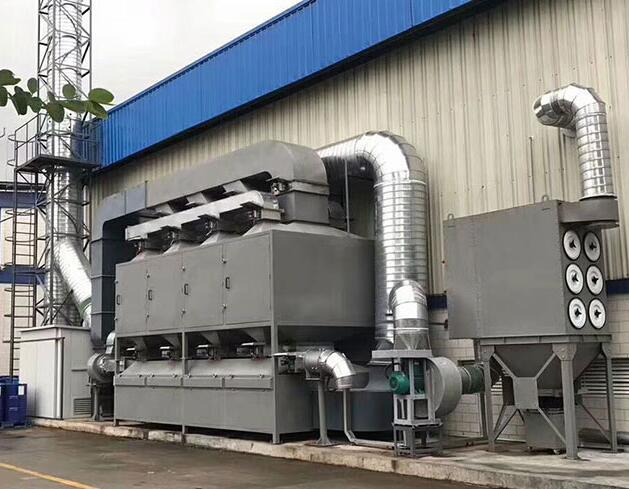I. Paint Spraying and Paint Exhaust Gas
Combined with our experience in treating paint spray waste gas, this kind of waste gas is suitable to adopt "spray washing pretreatment + dry high-efficiency filtration + activated carbon adsorption concentration + catalytic combustion" process! At present, the most commonly used methods in China are RCO catalytic combustion method, RTO thermal incineration method, activated carbon adsorption method, washing spray method, photocatalytic plasma combination technology and UV photocatalyst technology, among which activated carbon adsorption + RCO catalytic combustion method and RTO thermal incineration method are the most efficient ones.
2. Processing Method of Waste Gas Treatment from Painting and Painting
The exhaust gas of spraying paint at room temperature enters the spraying scrubbing tower directly, and pretreats and purifies the water-soluble substances, paint slag and paint mist in the exhaust gas; converts the vapor phase substances into liquid phase substances; the spraying scrubbing tower is equipped with an efficient swirl plate, which effectively contacts the gas with circulating water and removes the paint slag and paint mist in the exhaust gas; the upper part of the spraying tower is equipped with a wire mesh demister, which includes: Effectively remove water mist from spray tower, etc.
After washing, a small amount of water mist and water vapor will be mixed in the gas, which needs to be removed before it can enter the activated carbon adsorption device.
Waste gas after spraying and washing contains a small amount of water mist and water vapor. If it enters the activated carbon adsorption system directly, the gap of activated carbon will be blocked, resulting in the reduction of adsorption efficiency and even failure. At the same time, because of the long service life of activated carbon (in the case of analytical equipment), in order to ensure the adsorption effect of activated carbon, filter is usually used before the exhaust gas enters the activated carbon adsorption bed. Dust and viscous substances are removed by the filter. The filter usually adopts two stages: the first stage: filtration precision G3, and the second stage: filtration precision G4 to ensure that the exhaust gas entering activated carbon is relatively clean. The filter is used to capture the dust in the exhaust gas. If the dust enters the concentrated adsorber directly, the capillary of the adsorbing material will be blocked and the adsorption performance will be reduced. The filter adopts the type of initial effect + bag type medium effect filtration, which will be maintained in the design for easy disassembly and installation. Pressure difference switch represents pressure loss in real time. According to the set pressure, alarm signal is sent to PLC when the pressure difference exceeds a certain value, so that the user can change the filter material in time.
After the adsorption of honeycomb activated carbon is saturated, the saturated activated carbon bed and the activated carbon bed to be used after desorption are switched alternately according to the automatic control program of PLC. The hot air is fed into the activated carbon bed by the air blower to make the carbon layer warm. The organic matter is desorbed from the activated carbon. The desorbed waste gas belongs to the organic waste gas with high concentration, low air volume and high temperature.
The organic waste gases with high concentration, low air volume and high temperature desorbed by activated carbon are filtered by fire-proof dust collector and then enter a special plate heat exchanger to exchange energy with the high temperature gases after catalytic reaction. At this time, the temperature of the exhaust gas source is raised for the first time, and the gases with certain temperature enter the preheater for the second time, and then enter the first stage of catalytic reaction. At this time, the organic exhaust gas is partially decomposed at low temperature and releases energy. The exhaust gas source is directly heated to raise the gas temperature to the optimum temperature of catalytic reaction. The temperature meets the temperature requirement of catalytic reaction and enters the catalytic combustion chamber. The organic gas is thoroughly decomposed and releases a lot of heat at the same time. The exchanger converts the heat energy to the cold air flow, and the air is exhausted by the induced draft fan after cooling.
After years of technical research and development and analysis of Engineering cases, Huaene Environmental Protection has designed the most effective long-term waste gas treatment solutions for different site conditions, so as to achieve the best effect of waste gas treatment and easily pass the environmental assessment.
Low concentration exhaust gas can be selected: scrubbing tower + photocatalytic equipment + fan, spraying tower + plasma equipment + fan, spraying tower + activated carbon adsorption box + fan, high concentration can be selected activated carbon adsorption desorption + catalytic combustion equipment.
1. Washing Tower + Photo-Oxygen Catalytic Equipment + Fan
2. Spray tower + plasma equipment + fan
3. Spray Tower + Activated Carbon Adsorption Box + Fan
4. Activated Carbon Adsorption and Desorption+Catalytic Combustion Equipment
III. Major Sources of Spraying Waste Gas in Painting Workshop
The exhaust gas of spray painting workshop mainly comes from the volatile paint fog and the volatile gas produced during the drying process of the organic solvent contained in the paint. It is called volatile organic compounds (VOCs), and its main components are benzene, toluene, xylene, etc.
Generally speaking, VOCs (organic waste gas) produced during the use of intermediate coating, surface coating and cleaning solvent are the highest. Specifically to the production workshop, the most organic waste gases are spray paint room, air-drying room, paint room, drying room, etc. The components of waste gases produced in different workshops are different. Huaene environmental protection designs waste gas treatment plan according to the specific situation of the project to save costs.
IV. Characteristics of Exhaust Gas Components in Painting Industry
The toxic substances in the paint exhaust gas are benzene, toluene, xylene, ethylene glycol ether, toluene diisocyanate, heavy metals, phthalate, formaldehyde and so on.
Toluene, xylene: belongs to moderate toxic substances, anesthesia, stimulation, high concentration of nerve toxicity.
Benzene, a highly toxic substance, accumulates in nerves and bone marrow, causing damage to nerves and hematopoietic ancestors, and can cause leukemia for a long time. Ethylene glycol ether, which can form highly toxic compounds in the body, causes permanent damage to the blood circulation and nervous system, and can cause cancer for a long time.
TDI: (toluene diisocyanate) damage the cornea, absorption will damage the liver, kidney function, long-term exposure will cause cancer. Heavy metal; can cause chronic poisoning, residual in brain and liver organs, permanent damage to liver and kidney.
Phthalate, a plasticizer, can cause dysplasia in children. Benzene and benzene series in paint exhaust gas are not easily soluble in water and benzene ring under general conditions. They are not easy to oxidize and have high thermal stability. They do not decompose when heated to 900 C, which makes it difficult to treat paint exhaust gas.
The fine viscous paint particles in the exhaust gas of spraying paint are not easy to dilute and cause filter blockage. It is difficult to collect the volatile substances in the exhaust gas of paint spraying because of its large area. It is necessary to have a closed space for paint spraying.
Different emission situations and different exhaust gases have different technological processes. Fifteen years of experience in waste gas treatment in Huaene environmental protection, field investigation, free scheme design according to site conditions, a telephone to help you solve the problem of waste gas treatment in an all-round way, no longer bothered by EIA!
 Huaxi EP
Huaxi EP









 Mobile access
Mobile access